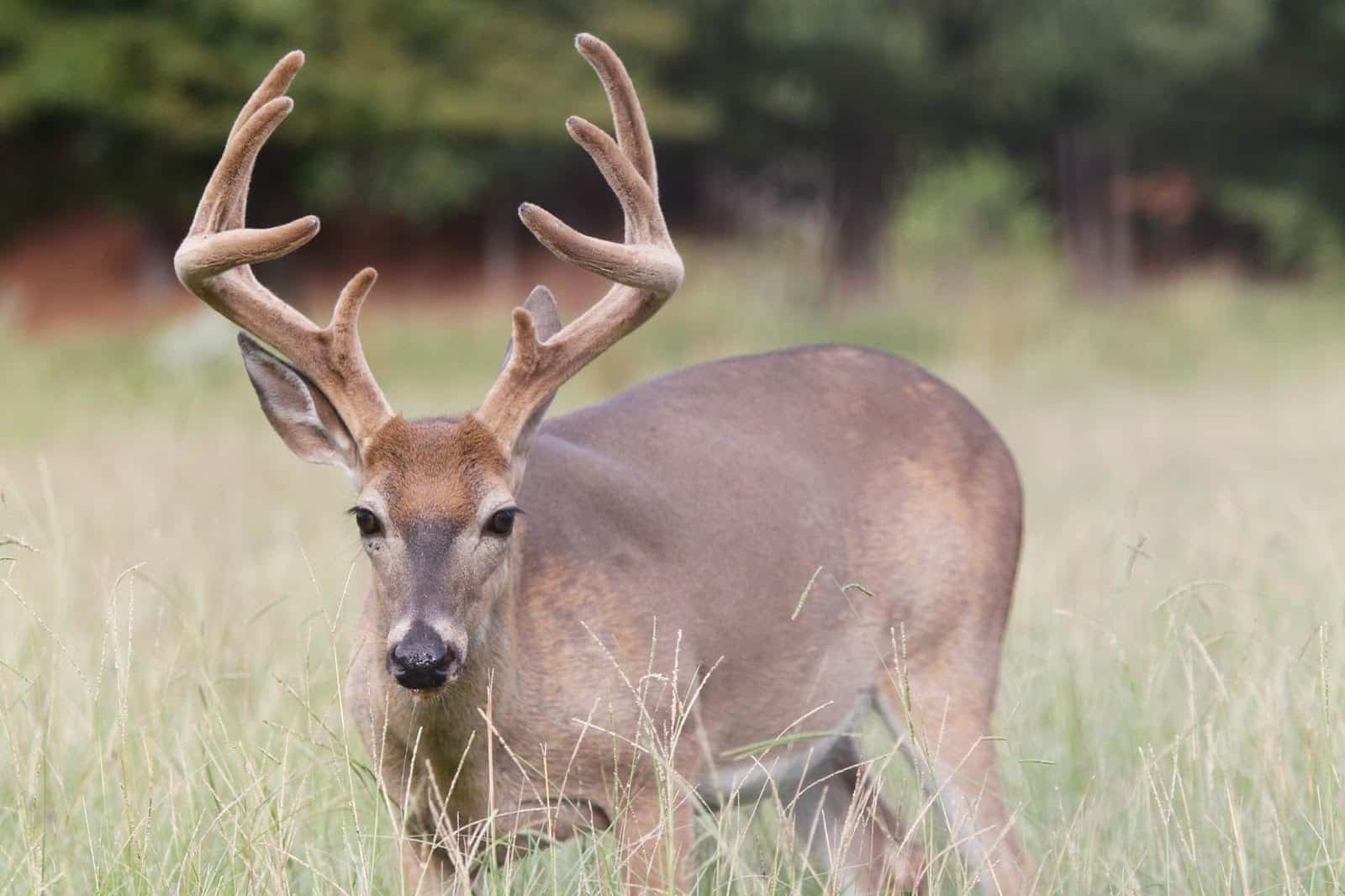Identify these six trees for success this hunting season
ON 10-02-2019
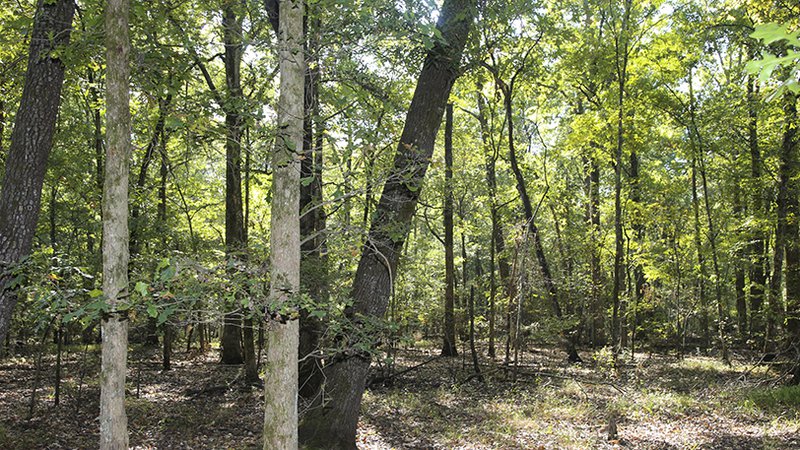
Oct. 2, 2019
Randy Zellers
Assistant Chief of Communications
LITTLE ROCK — Deer hunters looking for new stakeouts are often keyed on rubs and scrapes. These telltale signs of whitetail activity are roadmaps for hunters during the rut. But the best advice for pursuing all species including deer, is to follow the food. Even during the rut, does still look for something to eat, and the bucks will follow.
Squirrels, ducks and other game also focus on the food, and so should hunters following these animals. Food plots and feeders offer supplemental food for game and bring them within reach of many hunters, but there are plenty of groceries already in the woods, if you know what you’re looking for. Green plants are great for spring and summer, acorns and other hard mast rule the fall. During the peak of acorn drop, even a feeder full of corn can’t keep a deer’s interest for long. Here are six tree species every hunter should be able to identify and some tips on how to find them in the forest.
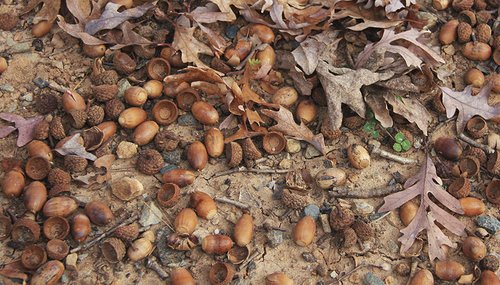 White oak acorns will draw deer from even corn feeders when they’re falling.
White oak acorns will draw deer from even corn feeders when they’re falling.
White Oak
If there’s one tree every upland deer and squirrel hunter should know, it’s the white oak. When the acorns from these woodland giants begin to fall, deer will nearly abandon other food sources for these sweet treats. Find a white oak loaded with acorns and you’d be remiss not to hang a stand nearby.
White oak acorns are extremely low in tanins, so they are much less bitter than those of most red oaks. In fact, American Indians and early settlers ground, washed and pounded the acorns into flour for cooking. The large acorns (some over an inch long) mature in one year, so a late freeze or drought can take a toll on the crop. White oaks are easily identified by looking at the leaves and bark. Each leaf has five to nine finger-like lobes that end in a rounded tip. The top of the leaf is a dull dark blue-green, while the underside is a pale, grayish green. The bark of white oaks is light gray. At about 10 to 12 feet up the tree, the bark will begin to take on a rough, scaly appearance.
Willow Oak
Willow oaks rule the wetland menu when the acorns begin to fall. Unlike white oak acorns that mature in one year, willow oak acorns take two years before dropping. This makes an ideal reserve food supply during years when a late freeze prevents white oaks and other trees from pollinating. Willow oaks also dominate low-lying areas typically absent of white oaks, so they are the go-to food for swamp bucks, squirrels and many duck species.
Willow oaks are distinguished by their narrow, 2- to 4-inch, willow-like leaves tipped with a single small bristle. The bark is thin and smooth with very few ridges. The acorn is only ¼- to ¾-inch long and rests in a shallow cup. Willow oaks are water-tolerant, so they are often found in floodplains of rivers, creeks and streams.
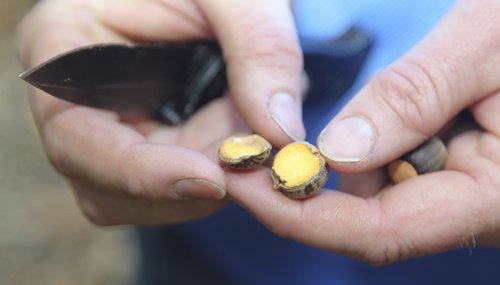 Tannins in red oaks such as willow oaks make them less desirable for deer at first, but preserve the acorn to be available when white oaks are scarce.
Tannins in red oaks such as willow oaks make them less desirable for deer at first, but preserve the acorn to be available when white oaks are scarce.
Nuttall Oak
One of the most common and useful trees of the bottoms, Nuttall oaks get their name from naturalist Thomas Nuttall, who identified the species. Find a stand of nuttalls near a stream crossing, and you’d better burn it into your memory for opening day. Just as with willow oaks, nuttalls are primarily found in bottomland hardwood stands. They typically prefer areas that drain quickly, and are often found slightly deeper in the bottom of floodplains.
A fun way to identify these acorns is to look for the ones that are “all nut.” Their acorns are much larger than that of willow oaks, typically reaching an inch long and up to ¾-inch in diameter. About a third of the acorn is enclosed in a deep cup. These large acorns are consumed quickly when they fall by deer and squirrels. They’re also an excellent food source for ducks, but their size prevents them from being taken as readily as willow oak acorns.
The leaves have five to seven lobes, each ending in a tapered point. The two lobes nearest the tip of the leaf typically are the largest.
Sawtooth Oak
This non-native oak has seen a boom in the United States since its introduction from Asia in the 1920s. The sawtooth was heavily relied on in the 1980s and 1990s by land managers wanting to improve habitat for deer. It would seem to have all the perfect attributes for a deer manager’s dream tree. They produce acorns by the five-gallon bucketful. People who plant them and ensure they have plenty of light will begin to see acorn production in as little as eight years. They also fill a niche for early archery season, dropping acorns around mid- to late September. But there are drawbacks to these miracle oaks.
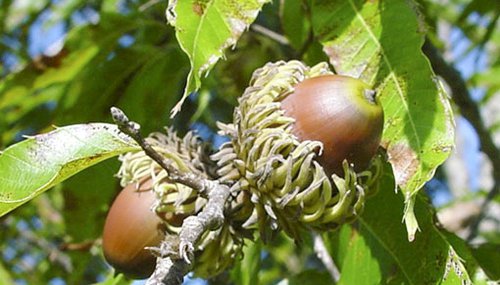 Sawtooth oak acorns are plentiful and attract deer in the early season, but are ignored once other acorns begin to fall.
Sawtooth oak acorns are plentiful and attract deer in the early season, but are ignored once other acorns begin to fall.
Sawtooth oaks will draw heavy deer activity when they first begin to drop their acorns, but as soon as other acorns begin to fall and the sawtooths aren’t the only game in town, they’ll be largely ignored. Game camera studies comparing deer preferences have shown deer walk directly over a pile of sawtooth acorns to nab a handful of fresh white oak acorns. In fact, in areas where many sawtooths were planted by land managers, piles of their acorns can be found undisturbed well into February when deer are then choosing red oak varieties over them. But for early season and in relatively young hardwood stands that lack many mature oaks, sawtooths can be a top tree to search for.
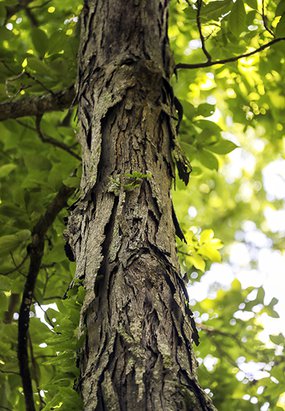 Shagbark hickories are easy to spot. Although deer don’t care for hickory nuts, squirrels are suckers for them.
Shagbark hickories are easy to spot. Although deer don’t care for hickory nuts, squirrels are suckers for them.
Shagbark Hickory
If you’re looking for squirrels, never pass up a hickory in September and October. Shagbark hickory, in particular, will draw bushytails like moths to a flame. Deer tend to stay away from hickories unless there are no other foods available, but rare is the shagbark nut that falls to the forest floor before a squirrel has sampled its flavor. When the squirrels are active, the pitter-patter of falling hickory hulls can be so prominent, a hunter may think it’s beginning to rain.
The easiest way to distinguish hickories in fall is by their leaf color. Shagbark and other varieties of hickory are some of the first trees to change color, and often display a brilliant gold color that stands out among the green leaves of other forest species.
Shagbark hickory is characterized by its scaly, loose bark that seems to be peeling off in sheets. The nuts are often found along the twigs in singles or pairs and are enclosed in a thick, walnut-sized hull. The green hull will dry and turn a dark brown when the nut is ripe, but many squirrels can’t wait and green cuttings will be found on the ground surrounding an active tree.
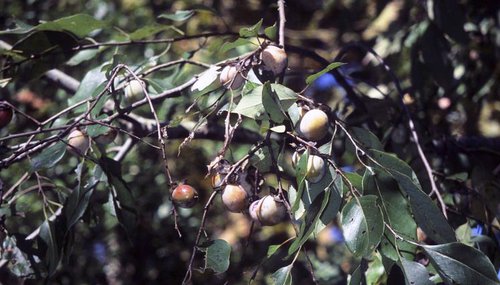 Persimmons draw all sorts of wildlife when they are orange and ripe. They’re not bad as a snack, either.
Persimmons draw all sorts of wildlife when they are orange and ripe. They’re not bad as a snack, either.
Common Persimmon
As soft fruits go, the persimmon is one of the most preferred foods during fall. They’re a bit puckery before they ripen, but those that fall to the ground are sweet and pulpy. Deer that find a few ripening persimmon trees are likely to make frequent stops until the fruits stop falling. And even if the deer don’t show up, a hunter watching over a persimmon tree will likely enjoy a snack or two on the way back to deer camp. Many people still gather ripe persimmons to include in pies, preserves and other treats.
Common persimmons are mid-story trees, rarely standing more than 50 feet tall. They tend to be at the fringes of fields and in openings of the forest canopy, where light can reach their leaves. The bark is very dark, almost black in older trees, with a blocky pattern that resembles alligator skin. The oblong leaves are dark green and shiny on the top, and pale green underneath. The soft fruit is slightly smaller than a golf ball and has an orange-brown color when ripe. Each orange globe has hard, smooth brown seeds and it’s not uncommon to see these seeds in the scat of possums, raccoons and other wildlife that gorge on the fruit when it’s ripe.
The Arkansas Department of Agriculture’s Forestry Division has an excellent resource for hunters looking to learn more about how to identify common trees in Arkansas. Their guide “Trees of Arkansas” is available at www.agriculture.arkansas.gov, and includes color images and key characteristics of native Arkansas species. It costs only $5 and is a must-have for any woodsman to learn more.
Recent News
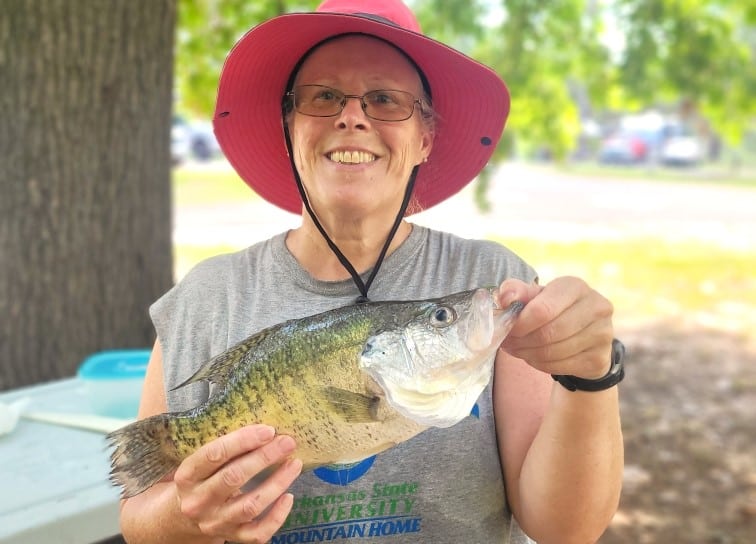
Arkansas Wildlife Weekly Fishing Report
Jul. 25, 2024
Subscribe to Our Weekly Newsletter E-mails
Don’t miss another issue. Sign up now to receive the AGFC Wildlife Weekly Newsletter in your mailbox every Wednesday afternoon (Waterfowl Reports are published weekly during waterfowl season and periodically outside the season). Fishing Reports arrive on Thursdays. Fill in the following fields and hit submit. Thanks, and welcome!

